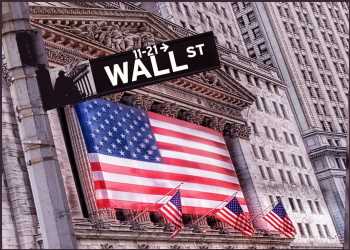Negative Reaction To Powell Testimony Continues To Weigh On Wall Street
Stocks came under pressure early in the session and have seen further downside over the course of the trading day on Tuesday. The major averages have all moved sharply lower after ending the previous session narrowly mixed.
In recent trading, the major averages have fallen to new lows for the session. The Dow is down 502.12 points or 1.5 percent at 32,929.32, the Nasdaq is down 98.59 points or 0.8 percent at 11,577.14 and the S&P 500 is down 53.12 points or 1.3 percent at 3,995.30.
The sell-off on Wall Street reflects a negative reaction to Federal Reserve Chair Jerome Powell’s highly anticipated semiannual monetary policy testimony before the Senate Banking Committee.
Citing stubbornly elevated inflation and stronger than expected economic data, Powell told lawmakers the “ultimate level of interest rates is likely to be higher than previously anticipated.”
Powell also said the Fed would be prepared to reaccelerate the pace of rate hikes if the totality of incoming data were to indicate that faster tightening is warranted.
Additionally, the Fed chief reiterated the central bank will likely need to maintain a restrictive stance of monetary policy for “some time” in order to restore price stability.
“The historical record cautions strongly against prematurely loosening policy,” Powell said. “We will stay the course until the job is done.”
The Fed’s next monetary policy meeting is scheduled for March 21-22, with CME Group’s FedWatch Tool currently indicating a 67.5 percent chance of 50 basis point rate increase and a 32.5 percent chance of 25 basis point rate hike.
“The upshot is that not only are interest rates set to rise higher than we previously anticipated, but there is a lot less scope for rate cuts later this year than we had originally thought,” Andrew Hunter, Deputy Chief U.S. Economist at Capital Economics, said in response to Powell’s testimony.
He added, “Nevertheless, with most leading indicators still flashing red and the impact of the huge monetary tightening already seen still feeding through, we still believe the real economy and labor market are likely to be weaker this year than the Fed expects, with a recession the most likely outcome.”
Sector News
Gold stocks have shown a substantial move to the downside on the day, dragging the NYSE Arca Gold Bugs Index down by 4.2 percent.
The sell-off by gold stocks comes amid a steep drop by the price of the precious metal, with gold for April delivery $34.40 to $1,820.20 an ounce.
Considerable weakness also remains visible among banking stocks, as reflected by the 3.8 percent nosedive by the KBW Bank Index.
Interest rate-sensitive commercial real estate stocks are also seeing significant weakness, resulting in a 2.3 percent slump by the Dow Jones U.S. Real Estate Index.
Utilities, energy and chemical stocks have also shown notable moves to the downside, while airline stocks are among the few groups bucking the downtrend.
Other Markets
In overseas trading, stock markets across the Asia-Pacific region turned in a mixed performance during trading on Tuesday. Japan’s Nikkei 225 Index rose by 0.3 percent, while China’s Shanghai Composite Index slumped by 1.1 percent.
Meanwhile, the major European markets all moved to the downside over the course of the session. While the U.K.’s FTSE 100 Index edged down by 0.1 percent, the French CAC 40 Index and the German DAX Index fell by 0.5 percent and 0.6 percent, respectively.
In the bond market, treasuries have moved to the upside after fluctuating early in the session. As a result, the yield on the benchmark ten-year note, which moves opposite of its price, is down by 3.6 basis points at 3.877 percent.
Source: Read Full Article

